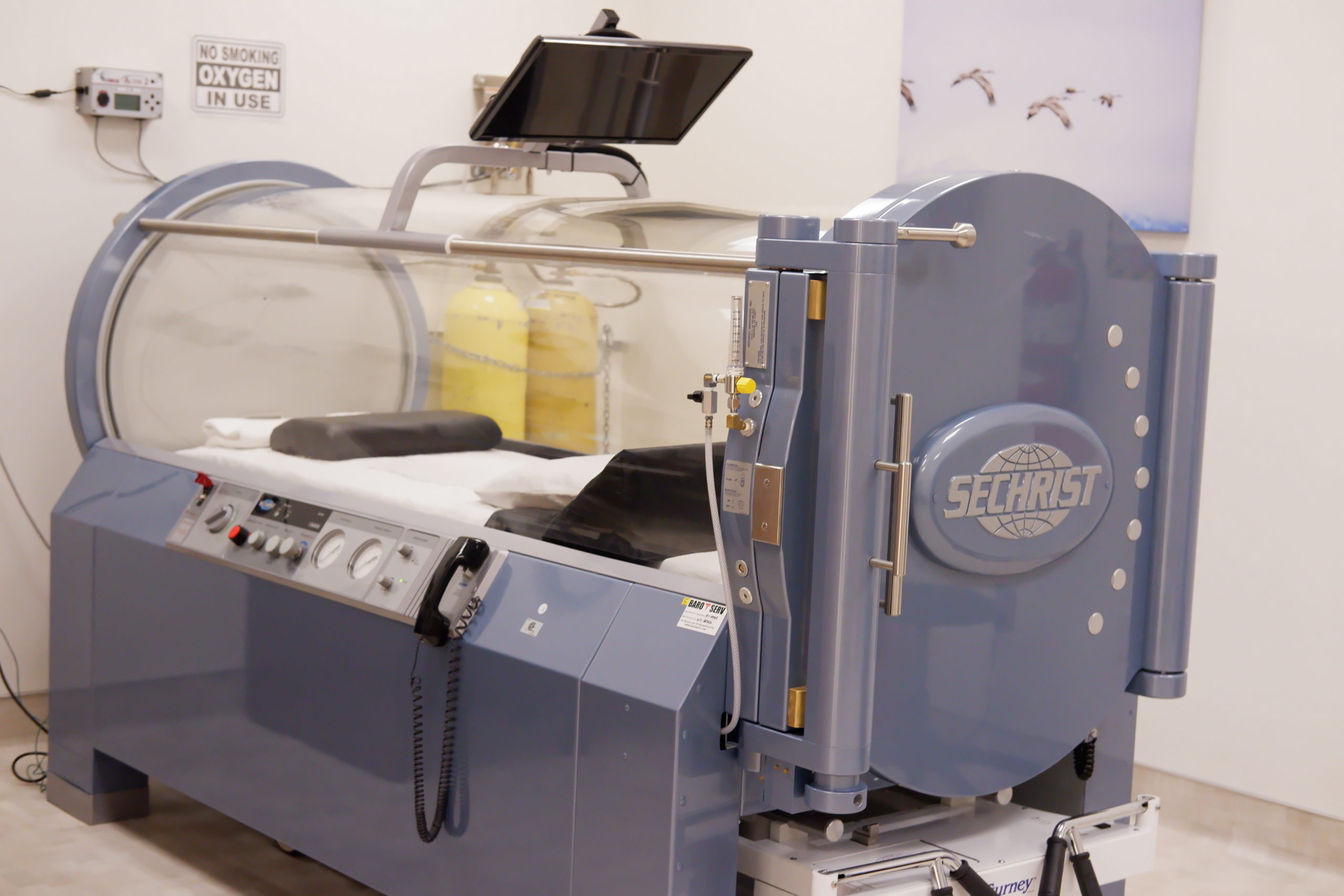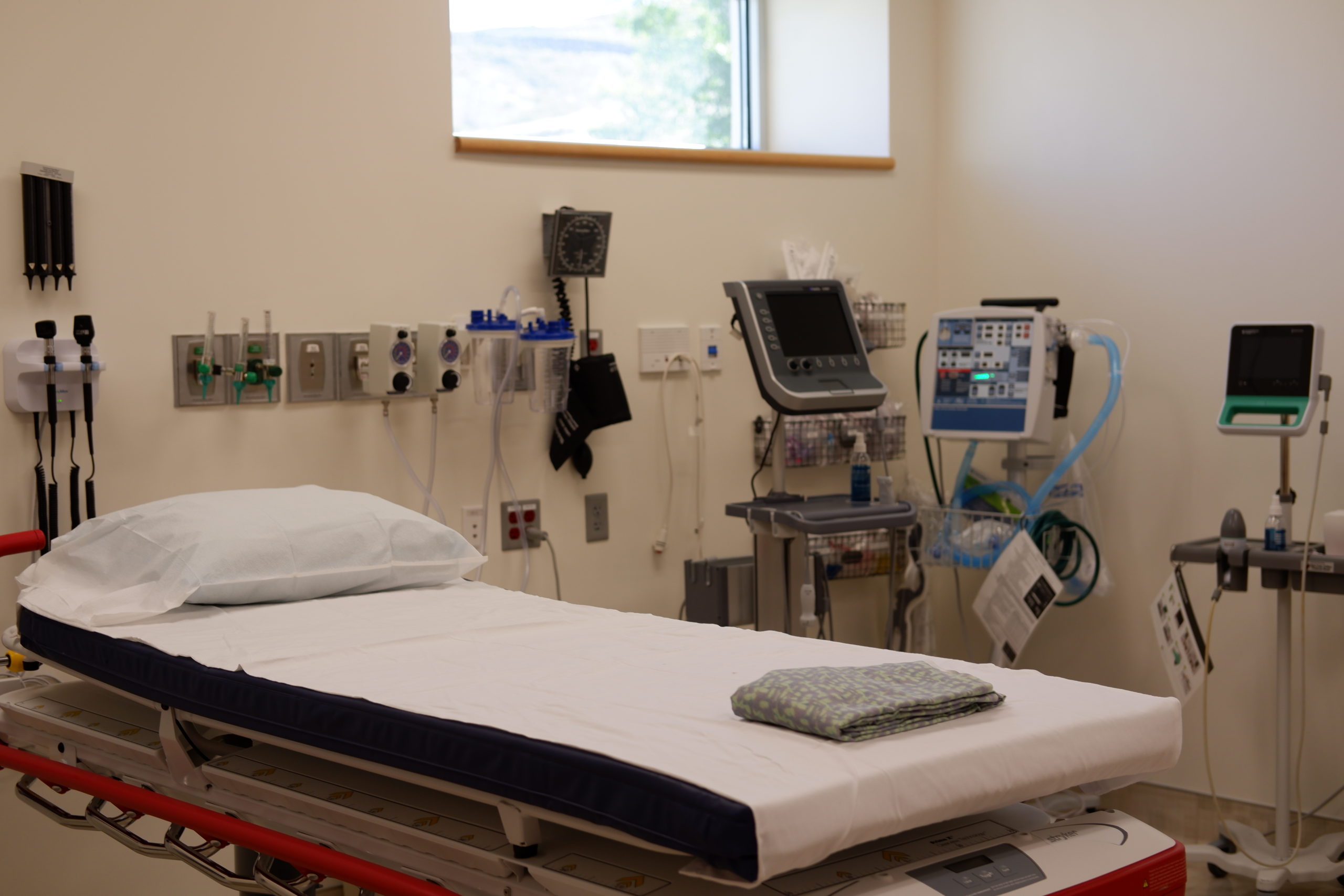By Natalie Montecino | for The Citizen
DESPITE being a small critical-access hospital with roughly 180 staff members, Rio Grande Hospital features cutting-edge technology and care options such as its Hyperbaric Wound Chamber.
This medical device, the only one in the San Luis Valley, became available to the community three years ago and works to heal wounds as a preventative measure for amputation. Patients receive hyperbaric oxygen therapy (HBOT) when they enter the chamber for a session, a process that saturates the affected area and bloodstream with higher levels of oxygen which promotes rapid tissue growth and faster healing.

ACCORDING to the hospital, more than 1,100 patients have taken advantage of the Hyperbaric Wound Chamber during the past three years, clearly fulfilling a medical need within the community. Valley residents struggle with elevated rates of diabetes, a disease that makes affected individuals more susceptible to severe infections, amputations and other chronic illnesses, according to the San Luis Valley Regional Medical Center’s 2012-2013 Community Health Assessment.
With a success rate of more than 90 percent, the Hyperbaric Wound Chamber is proving to change lives in the Valley. However, the cost of running this machine can be high and, depending on the severity of the wound being treated, some patients may need multiple sessions. To help patients meet the cost, Rio Grande offers payment options: according to the hospital’s 2021 Price Transparency online feature, 30-minute hyperbaric sessions are discounted for uninsured patients, with rates estimated to start around $100 and further financial assistance available. Dr. Patrick Thompson, co-director of the Wound Care Clinic, noted, “Even if it doesn’t make us any money, as long as we save one limb or one life, it’s worth it.”
For Rio Grande Hospital, preventative care doesn’t end with wound treatment. Eva Timberlake, development and communications officer for the hospital, told about the upcoming launch of the new Wellness Center. This initiative was first envisioned during meetings with a group from Colorado State University, where hopes of involving the local community more directly in health care were expressed. The center, which is on schedule to open at the beginning of 2022, will provide space for visiting physicians, as well as serve as a site for community building in the county.
One particular goal that the Wellness Center wants to work toward is building a healthier food culture in the

Valley. To do this, the Wellness Center will create an open kitchen space, offer nutrition lessons and accompany participants on trips to the grocery store to learn more about healthy food. By contributing to a healthier food culture, Rio Grande Hospital hopes to address continuing diabetes concerns, too.
Through the Wellness Center, the hospital hopes to inform community members about the impact of their food choices, as well as provide healthy alternatives. Timberlake expressed the hospital’s understanding of feasibility and what efforts community members would be most willing to participate in. The low-stress learning environment that the Wellness Center plans to offer will allow community members to gain the knowledge they need in a fun and casual way.
Receiving medical care in more rural areas of Colorado has always presented challenges. According to a 2012 study on rural health disparities by Julie Marshall and Lisa Vanraemdonck, the origin of Colorado’s public health system – one defined by traveling nurses rather than organized health departments – still influences rural health care today. The authors emphasize that rural communities in Colorado tend to have limited health care access in terms of facilities and specialized physicians when compared to urban areas, a disparity that negatively influences overall community health and wellbeing. However, Rio Grande Hospital’s executive team hopes to continue expanding reach and care options through facility renovations and further collaboration with San Luis Valley Health.

For example, since the start of the COVID-19 pandemic, Rio Grande has been working in conjunction with larger medical providers to ensure that residents of Del Norte have access to vaccines, testing and other care. Similarly, the hospital’s emergency room was renovated three years ago to accommodate more patients and streamline the flow of the facility. While expansion and networking have been a priority as of late, Rio Grande hopes that by maintaining a smaller, intimate staff
size it will continue to understand and address the unique needs of the community.
“If residents ever need anything, we are here to help them. We’re like one big family,” Timberlake said.
For the San Luis Valley and its many communities, medical providers like Rio Grande Hospital continue stepping up to fill rural healthcare gaps, providing better, more complex care to the residents they serve. To learn more about Rio Grande Hospital and the services they offer, visit their website at https://riograndehospital.org/.


